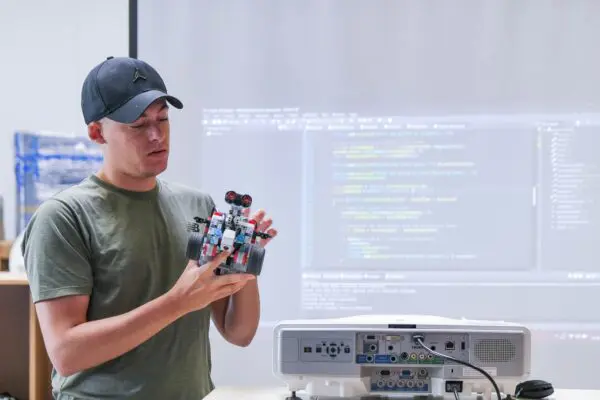
Utrecht, Netherlands
Game Design and Development
When:
18 August - 22 August 2025
Credits:
1.5 EC
Read more
Computer Sciences
When:
07 January - 17 January 2025
School:
TU Berlin Summer and Winter School
Institution:
TU Berlin
City:
Country:
Language:
English
Credits:
3 EC
Fee:
1050 EUR

According to the 2022 annual IEEE Spectrum survey of the top programming languages (source: https://spectrum.ieee.org/top-programming-languages-2022/ieee-spectrums-top-programming-languages-2022), Python remains the most popular programming language in job listings. In this course, the fundamentals of Python are covered, with a special focus on the skills necessary for in-depth data analyses and data visualization. These two skills are fundamental in a wide range of disciplines, including but not limited to STEM (Sciences, Technology, Engineering and Mathematics) and Humanities fields of study.
In this course, we will cover the following:
Data types and compound data structures
Conditional statements and loops
Python functions
Importing, exporting and analyze different types of data using pandas
Visualizing data using Matplotlib and Seaborn
Bonus: developing interactive plots with Plotly
At the end of the two weeks course, students will work and present a final personal data analytics and visualization project.
Dina Deifallah is a Data Scientist and a Data Science mentor based in Berlin. After 10+ years working in academia as a researcher and lecturer, she switched to working in the Data Science field in 2017, soon after completing her PhD degree in Communications Engineering.
This course can be useful for all disciplines, but especially STEM (Sciences, Technology, Engineering and Mathematics) and other disciplines that have a data analysis component (e.g.Humanities)
Learning goals:
In this course, the fundamentals of Python are covered, with a special focus on the skills necessary for in-depth data analyses and data visualization. These skills are fundamental in a wide range of disciplines, including but not limited to STEM (Sciences, Technology, Engineering and Mathematics) and Humanities fields of study.
The learning goals of the course can be summarised in the following points:
install and run Python and all other needed external packages
write basic python code, including conditional statements, loops and functions
import and export data in python
analyze different types of data in python using the pandas package
create meaningful visualizations in python to summarize different types of data using Matplotlib and seaboarn packages
Effectively and clearly present analytical results, i.e. data storytelling
Main course components:
In this course, we will cover the following regarding Python as a tool for data analysis and visualization:
Data types and compound data structures
Conditional statements and loops
Python functions
Visualizing data using Matplotlib and Seaborn
Importing, exporting and analyze different types of data using pandas
Bonus: creating interactive plots with Plotly
The main learning tools will be:
Python jupyter notebooks and .py files shared in class by the instructor
Recommended educational material including online ebooks, blog posts, web-based tutorials and videos. All such materials are free for educational use and will be shared with the students via email and in class
Recommended books and online courses (not free and these will be optional)
Students are assumed to have their own personal laptops with a Python installation as the main hardware tool required for this course
Fee
1050 EUR, For students
Fee
1250 EUR, Working professional/Non-student:
When:
07 January - 17 January 2025
School:
TU Berlin Summer and Winter School
Institution:
TU Berlin
Language:
English
Credits:
3 EC

Utrecht, Netherlands
When:
18 August - 22 August 2025
Credits:
1.5 EC
Read more

Budapest, Hungary
When:
21 July - 02 August 2025
Credits:
3 EC
Read more

Aachen, Germany
When:
06 July - 26 July 2025
Credits:
4 EC
Read more